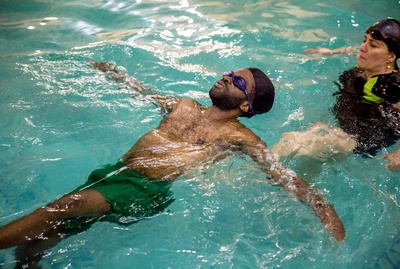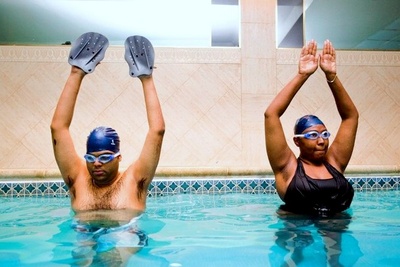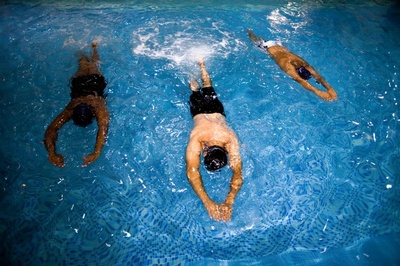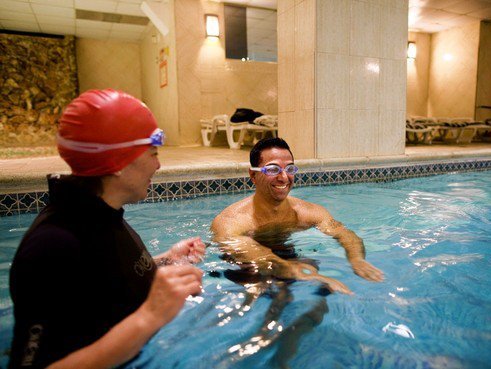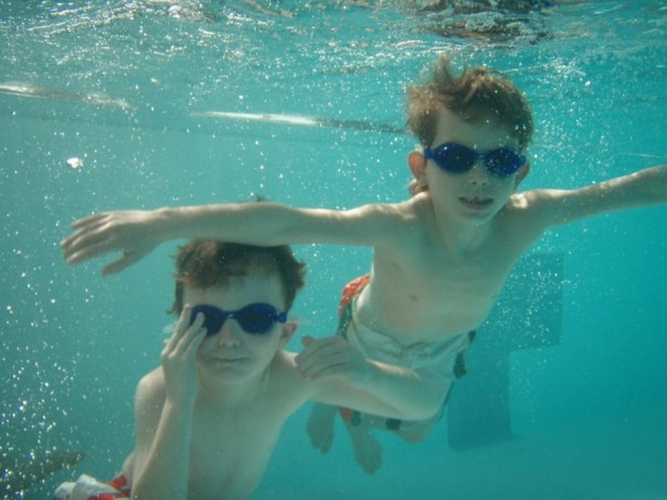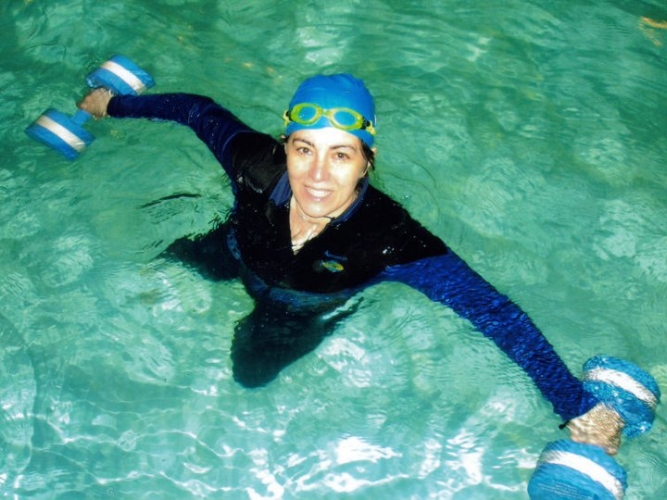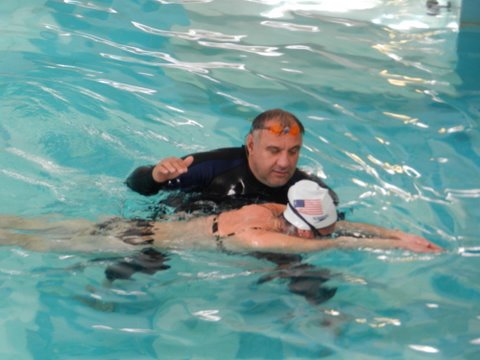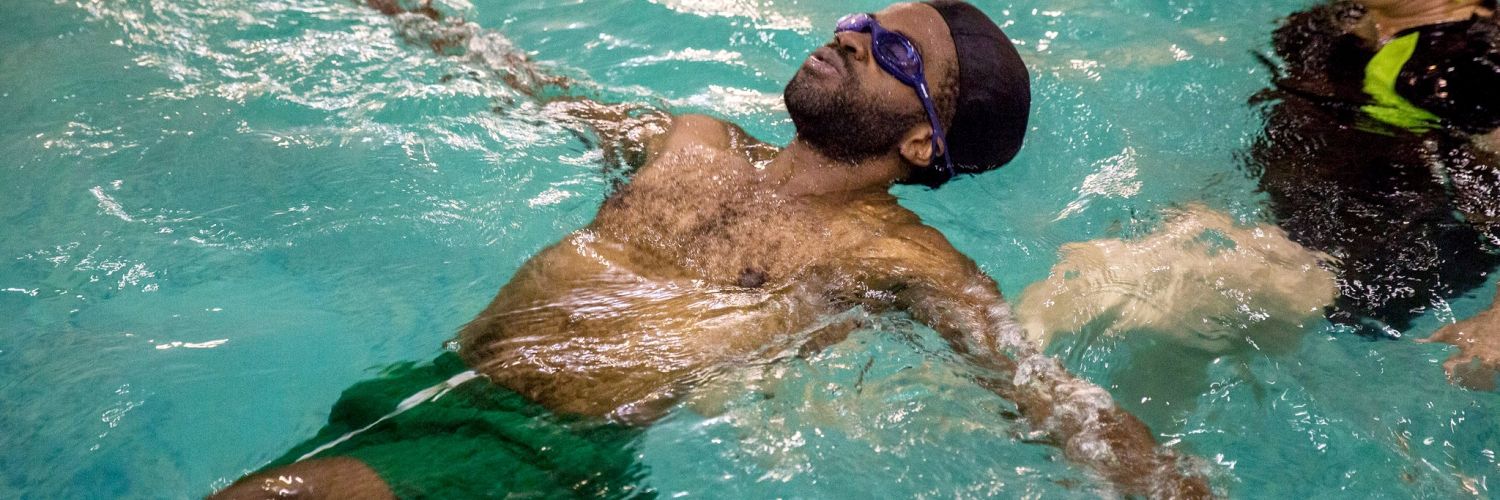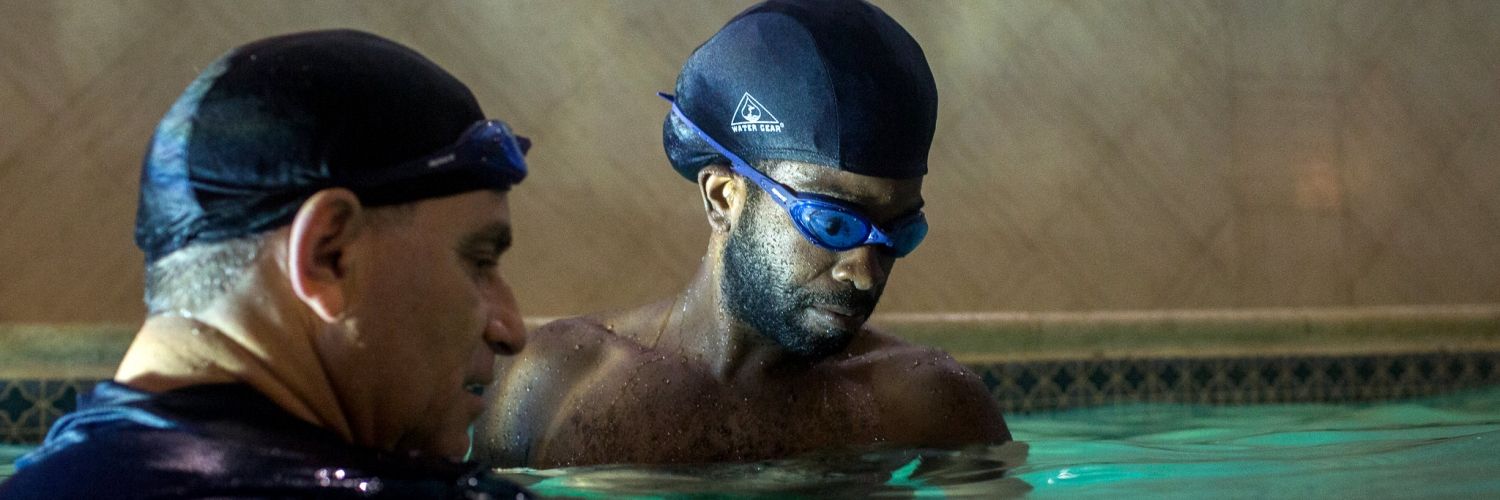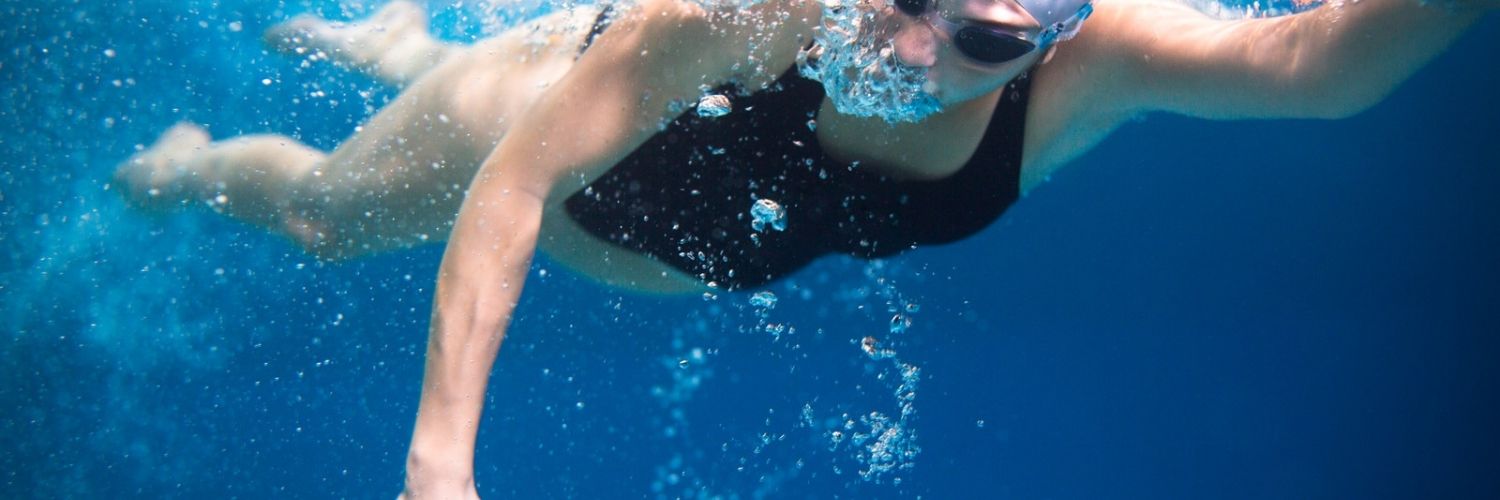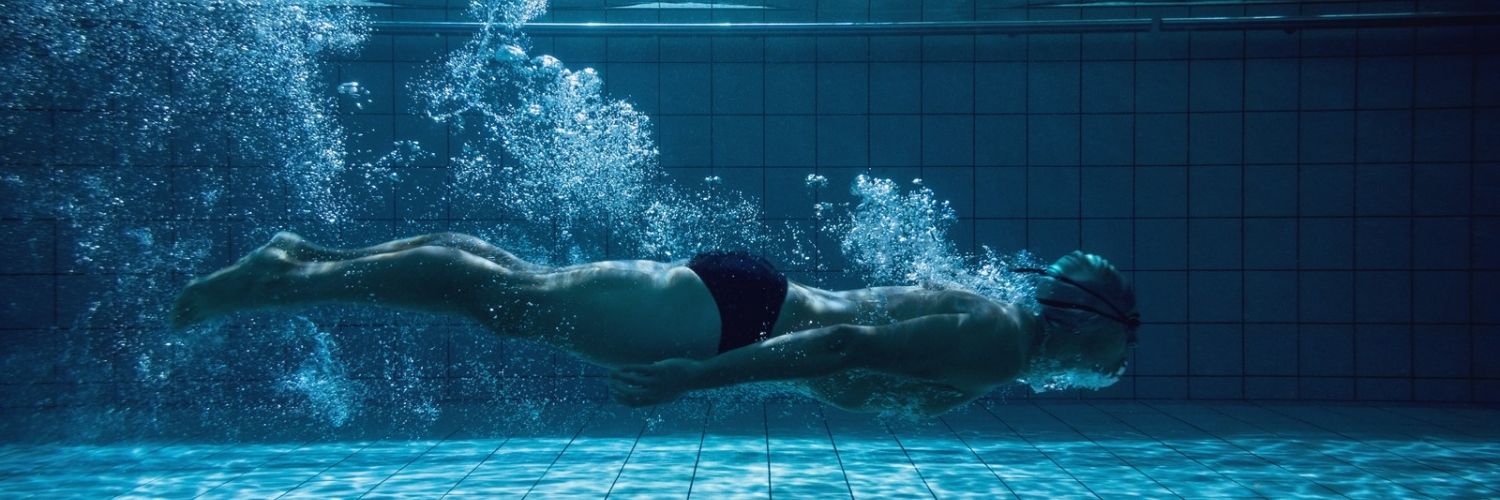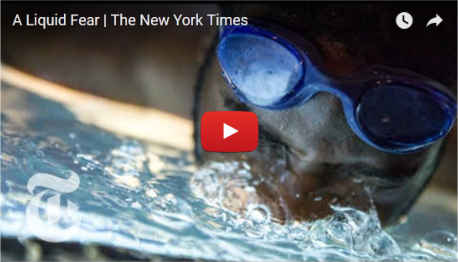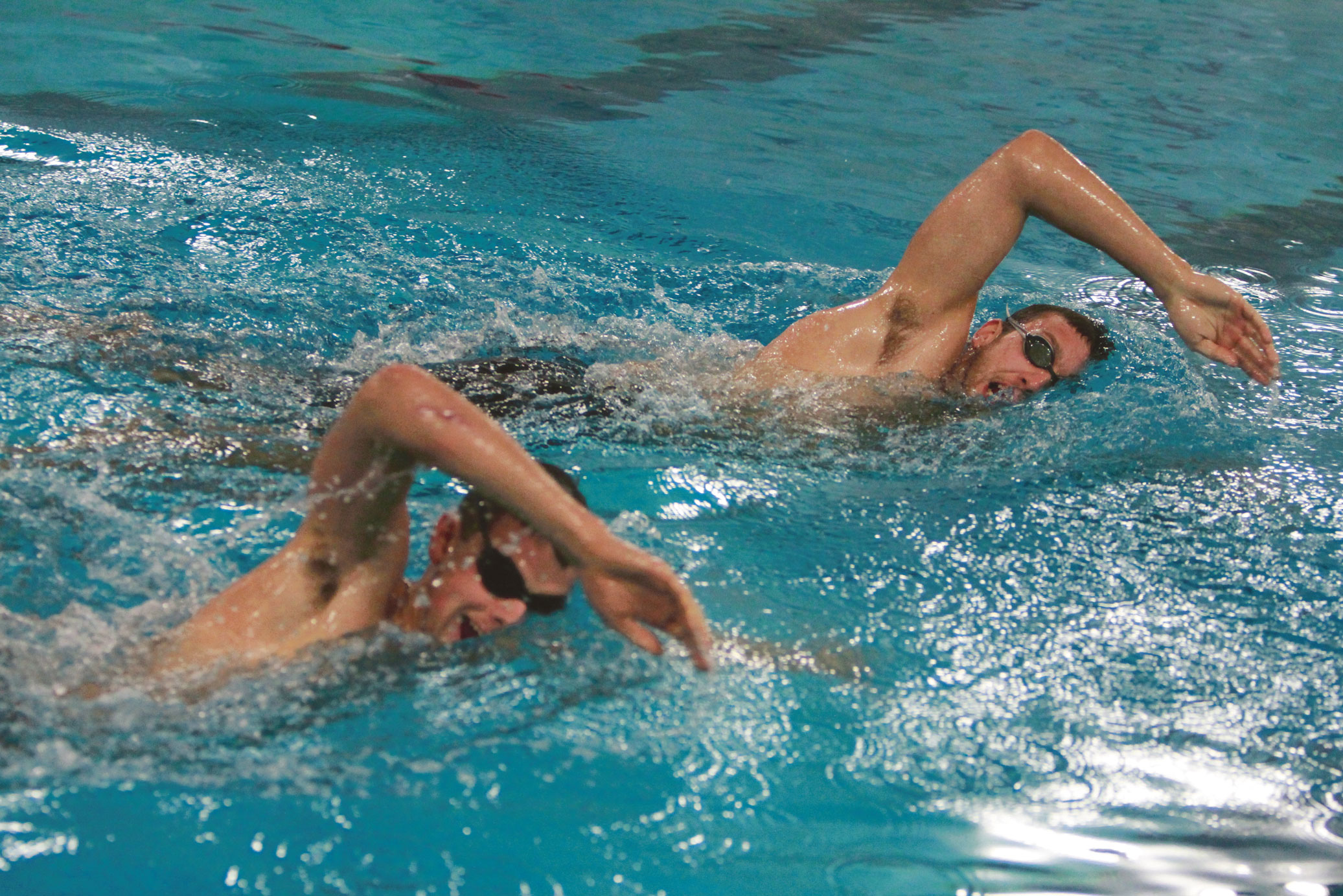Rotating from side to side as you swim is a method that has been around for over 30 years. When Mark Spitz was gaining national recognition in the early 70′s, many critics said his only problem was that he employed a “strange” side-to-side swimming action!
PROPER SIDE SWIMMING TECHNIQUE
Good swimming is about using the core of your body—namely the hips, stomach, lower back and chest. Top swimmers rotate the core of their body from one side to the other, while keeping the head fixed. When you rotate in this way, you move through the water more like a fish, or a boat, reaching further forward on each stroke, and maximizing your efficiency.
PRACTICING THE SIDE SWIM
Here is a drill to begin practicing (you may use fins if you have them):
- Kick on your side with your left hand extended out and your right hand by your side. Keep your head down and locked to your shoulder.
- On the second length, switch sides and extend your right hand, with your left hand by your side.
- When looking down, you should be at about a 90-degree angle in the water.
- When you need air, roll all the way up into more of a 45-degree angle, take a few breaths, and repeat.
- Continue to practice this kicking drill, and add in arm strokes as your side balance improves.
THE BENEFIT OF THE SIDE SWIM
Swimming freestyle on your side may seem like a foreign concept at first. But with consistent practice, you will be able to swim more efficiently, resulting in faster swim times and greater energy conservation.
About Aqua Skills, AEA
Swimming is a sport and exercise that is a vital skills to acquire for a magnitude of reasons. For starters swimming improves ones overall cardiovascular system, and is boots up the circulatory system which will help the body eliminate toxins and will be disease preventative. For children it is essential for them to start increasing their motor skills and learn swimming as a survival skills to prevent drowning. Children love the water, as a rule, and it is essential that they learn to swim and cope with the water for safety reasons. Their early exposure to swimming lessons must be with a gentle approach to encourage enjoyment. A talented instructor will build the child's confidence and trust and teach them through games of guided discovery. As for the adults that never learned to swim with post traumatic experiences from childhood,Not to Worry it is never to late to learn to swim. Baby boomers should all be swimming a few times a week. Swimming should be apart of their exercise routine Swimming improves flexibility and range of motion.. For people with early signs of arthritis or all kinds of body and joint aches this sport will give you a work out that will not impact your joints. The circulation is invigorating!
After learning to swim one can open their sphere of water sports enjoyment from kayaking,scuba diving,water skiiing,sailing ,ocean and lake swimming. Swimmng is truly a disease preventative sport. Mind you, we must be swimming correctly to truly embrace the benefits of swimming.It is wise to invest in professional swim instruction and it is important to have a trial session with your instructor. As with all relationships there needs to be chemistry. If you are living in the New York Metro area there is an excellent swim school in lower Manhattan 212 206 6976. They teach all aspects of swimming from over coming fear of water,to beginner swim,intermediate,stroke improvement,fitness swimming and children ages 4 +++. Invest in a body suit and swim all year round.

